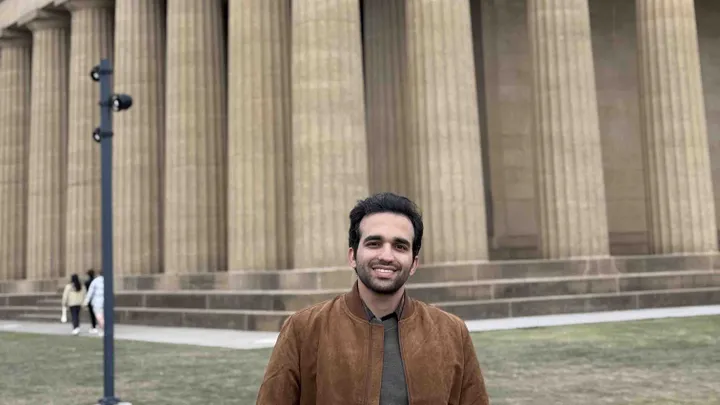A fact of life for today’s college student is one that is tough to grapple with. The average senior will leave college with an average of $25,250 of student loans debt. That albatross around the neck of many scholars will only grow as more campuses increase tuition for next year. The real question becomes, how do you pay for it?
The Price of Admission
UA student Dontavius Wade understands the pressure that so many of his peers feel struggling under the weight of debt. The freshman majoring in public relations is the first in his family to go to a four-year university. He has not seen his father in more than two years, but he was never really around to begin with. In fact, the only time that he hears of his dad nowadays is when he sends his mother the court ordered child support. It’s for $90.
Connie Brooks is the 43-year-old mother of Dontavius and his two siblings. She used to work two jobs, at a tax preparation service and Toys R Us. Brooks was also attending Wallace Community College when disaster struck.
“She had a heart attack and everything went downhill from there,” Wade said. “She wasn’t able to work anymore after that.”
Employers soon began to refuse to hire Brooks, due to her preexisting medical conditions, and before long, she was considered physically disabled by the state.
Today, her only source of income is the limited amount of money that she receives from governmental welfare programs.
Despite this, Wade went on to prosper at Ashford High School in Dothan, Ala. He graduated with a 4.4 GPA, served as student body president and was a member of the honors society Senior Beta. His mother always pushed him to go to college, and he had a large support system of family and friends that encouraged him.
His dream was to go to the University of Alabama, but the cost of admission, some $17,000 a year, was going to be a massive obstacle.
“My senior year, everyone knew I was going to be successful and go to college, but I guess it didn’t really hit my mom until it was time to actually go,” Wade said.
Wade had to work last summer just to save up enough money to make the trip to Bama Bound and pay its fees. It was during Bama Bound’s parent orientation when Brooks realized what it would take for her son to attend the Capstone.
“She didn’t want me to get a loan, but she couldn’t get a loan because her income is so small,” Wade said.
Wade received a federal Pell Grant, but then had to get a cocktail of government loans to cover the $12,000 shortfall.
Making it work
One way Alabama students are coping with student loans is by getting a job.
Zandra Glenn, a freshman pre-med student, works for the University as a member of its Event Operations Group. Glenn worked the whole football season and earned $8 an hour, which was $1,071 for the year. Glenn also has a Pell Grant and plans on working this summer so she can pay the University.
“The government tells you that you should go to college to further your education, to get that higher degree in order to get a higher paying job and they do offer you a certain amount of loans, but it’s still not nearly enough to cover the rising tuition, room and board and books,” Glenn said.
Vaishali Patel of the University’s Employment and Volunteer Programs office said that the main reason students choose to work is to earn money to help cover the costs of college and living expenses.
Over 4,000 UA students work on campus as either graduate student assistants, work-study student employees and graduate students working in assistantships.
“In addition to a paycheck, working on campus helps students network with new people by connecting them with staff, faculty and other students who may help with the transition to life at UA,“ Patel said. “Students who work also develop essential job skills and gain valuable experience that helps them prepare for the job market after graduation.”
Another way to save up money is to work off campus. Craig Williams, the general manager of Buffalo Phil’s on the Strip, employs roughly 25 Alabama students.
“We try to employ people who want to be here and need to pay their own bills and pay for school, car payments,” Williams said. “We’ve realized that when people need the money, they show up more and have a better work ethic.”
Late last year, the Obama administration announced some changes in student loan policy. The administration launched a “Pay As You Earn” plan that they claim will reduce monthly payments for more than one and a half million current college students.
“Starting in 2014, borrowers will be able to reduce their monthly student loan payments to 10 percent of their discretionary income,” a White House press release said.
“The ‘Pay As You Earn’ proposal will allow 1.6 million students the ability to cap their loan payments at 10 percent starting next year, and the plan will forgive the balance of their debt after 20 years of payments. Additionally, starting this January, an estimated six million students and recent college graduates will be able to consolidate their loans and reduce their interest rates.”
While these policy changes may help students like Wade in the long run, he is still worried and wants to begin earning income now.
He has applied to work for and been rejected by the Waffle House on the Strip, Crimson Café and Publix.
Wade then applied for positions on campus at the SupeStore, in the library and as an office assistant.
“I just got emails back from them saying that the positions have been filled,” Wade said.
Wade was also rejected for the work-study program and was not hired as a residential adviser.
Despite these setbacks, Wade remains hopeful – which he credits his strong religious faith for – but does hold reservations about the future.
“My fear is that I won’t get a job after I graduate,” Wade said.








